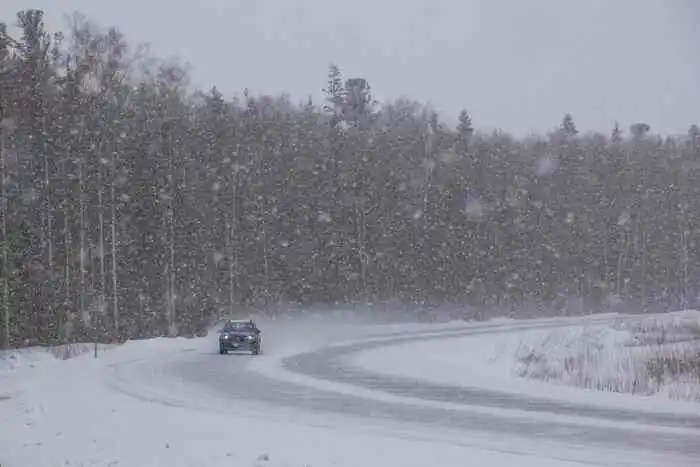Understanding the Risks
British Columbia's varied geography means drivers may encounter a range of hazards. According to ICBC, some of the most common emergency situations include vehicle breakdowns, accidents, and adverse weather conditions. The BC Ministry of Transportation and Infrastructure highlights that road safety is a shared responsibility, emphasizing the importance of being prepared for unexpected situations.
Essential Emergency Kit
An emergency kit is a must-have for all vehicles. The BC government recommends the following items be included:
First Aid Kit: To handle minor injuries until professional help arrives.
Flashlight and Batteries: Essential for nighttime emergencies or if your car breaks down in a dark area.
Blankets and Warm Clothing: Especially important during winter months.
Non-perishable Food and Water: Enough to last at least 72 hours.
Basic Tools: Including a jack, tire iron, and a multi-tool.
Reflective Triangles and Flares: To alert other drivers of your vehicle’s presence.
Portable Phone Charger: To ensure you can call for help if needed.
Preparing Your Vehicle
Regular maintenance is key to preventing emergencies. ICBC suggests routine checks of your tires, brakes, lights, and fluid levels. A well-maintained vehicle is less likely to experience breakdowns, which can lead to dangerous situations.
Winter Driving Preparation
Winter conditions can be particularly hazardous in BC. ICBC reports an increase in accidents during the winter months, often due to snow and ice. Ensure your vehicle is equipped with winter tires and consider carrying chains if you plan to travel in mountainous areas. Always check weather conditions and road reports before setting out.
Common Emergency Situations and How to Handle Them
Vehicle Breakdown
Example: Your car suddenly stops running on a remote stretch of highway.
Best Course of Action: Safely pull over to the shoulder of the road. Turn on your hazard lights to alert other drivers. Set up reflective triangles or flares around your vehicle to increase visibility, especially at night or in low visibility conditions. Stay inside your vehicle with your seatbelt fastened and call for roadside assistance.
Preventive Solution: Regularly service your vehicle to ensure all components are in good working condition. Check your battery, engine, and tires before long trips.
Accidents
Example: You are involved in a minor collision on a busy city street.
Best Course of Action: If it is safe, move your vehicle out of traffic to avoid further accidents. Exchange information with the other driver, including names, contact information, insurance details, and license plate numbers. Take photos of the scene and damage for insurance purposes. Contact the police if there are injuries or significant damage.
Preventive Solution: Drive defensively, maintain a safe following distance, and avoid distractions like mobile phones. Ensure your vehicle's safety features, such as airbags and seat belts, are functioning correctly.
Adverse Weather Conditions
Example: You encounter a sudden snowstorm while driving on a mountain pass.
Best Course of Action: Reduce your speed and increase your following distance to allow more time to react to any hazards. Use your headlights to improve visibility. If the weather worsens, find a safe place to pull over and wait for conditions to improve. Stay in your vehicle and keep it running for warmth, but ensure the exhaust pipe is not blocked to avoid carbon monoxide poisoning.
Preventive Solution: Check weather forecasts before your trip and plan your route accordingly. Equip your vehicle with winter tires and carry chains if necessary. Keep your gas tank at least half full to prevent the fuel line from freezing.
Flat Tire
Example: Your tire blows out while driving on a rural road.
Best Course of Action: Gradually reduce your speed and pull over to a safe location. Turn on your hazard lights and set up reflective triangles. If you know how to change a tire and it is safe to do so, replace the tire with your spare. If not, call for roadside assistance.
Preventive Solution: Regularly check your tire pressure and tread depth. Ensure you have a spare tire, jack, and tire iron in your vehicle. Learn how to change a tire if you don't already know.
Preparing for emergencies on BC roads is not just about having the right supplies; it's about being informed and proactive. By regularly maintaining your vehicle, carrying an emergency kit, and staying informed about road conditions, you can significantly reduce the risks associated with driving in British Columbia. Remember, road safety is a shared responsibility, and being prepared can make all the difference in an emergency situation.
References
BC Government Emergency Preparedness: https://www2.gov.bc.ca/gov/content/safety/emergency-preparedness-response-recovery/preparedbc
